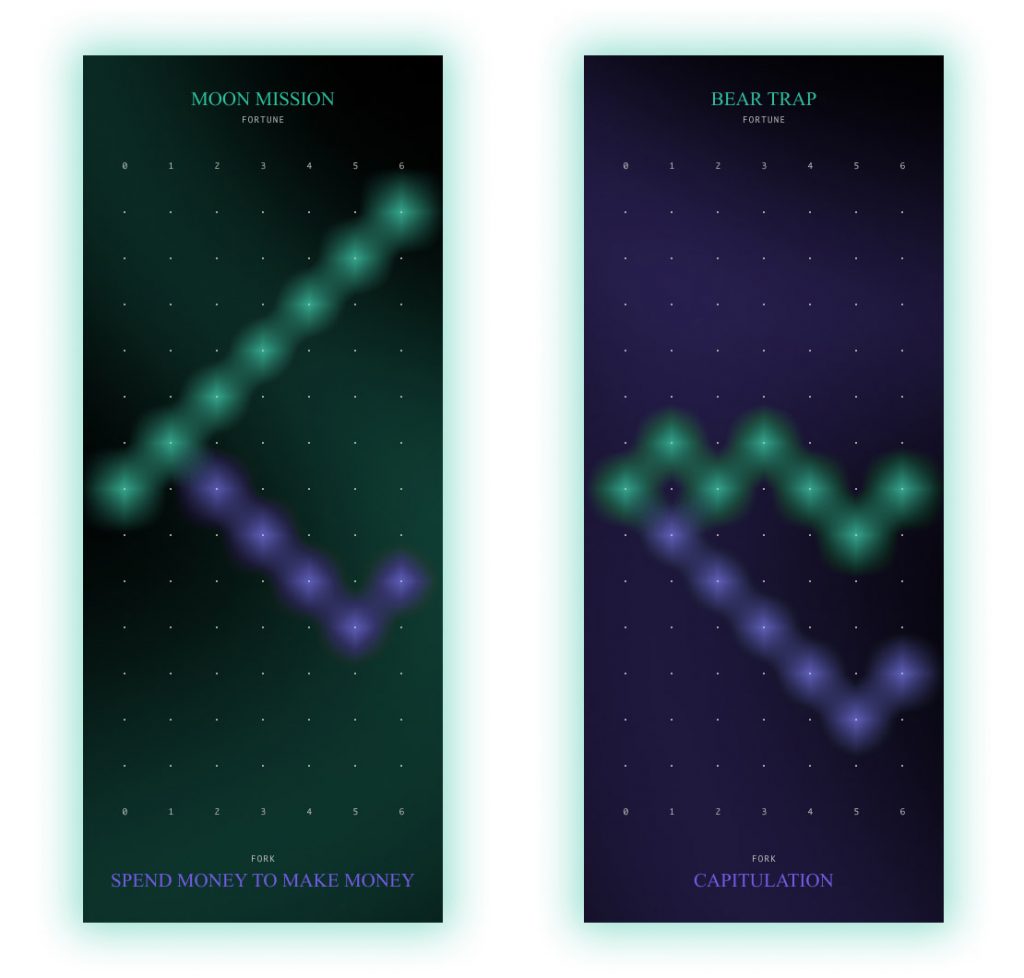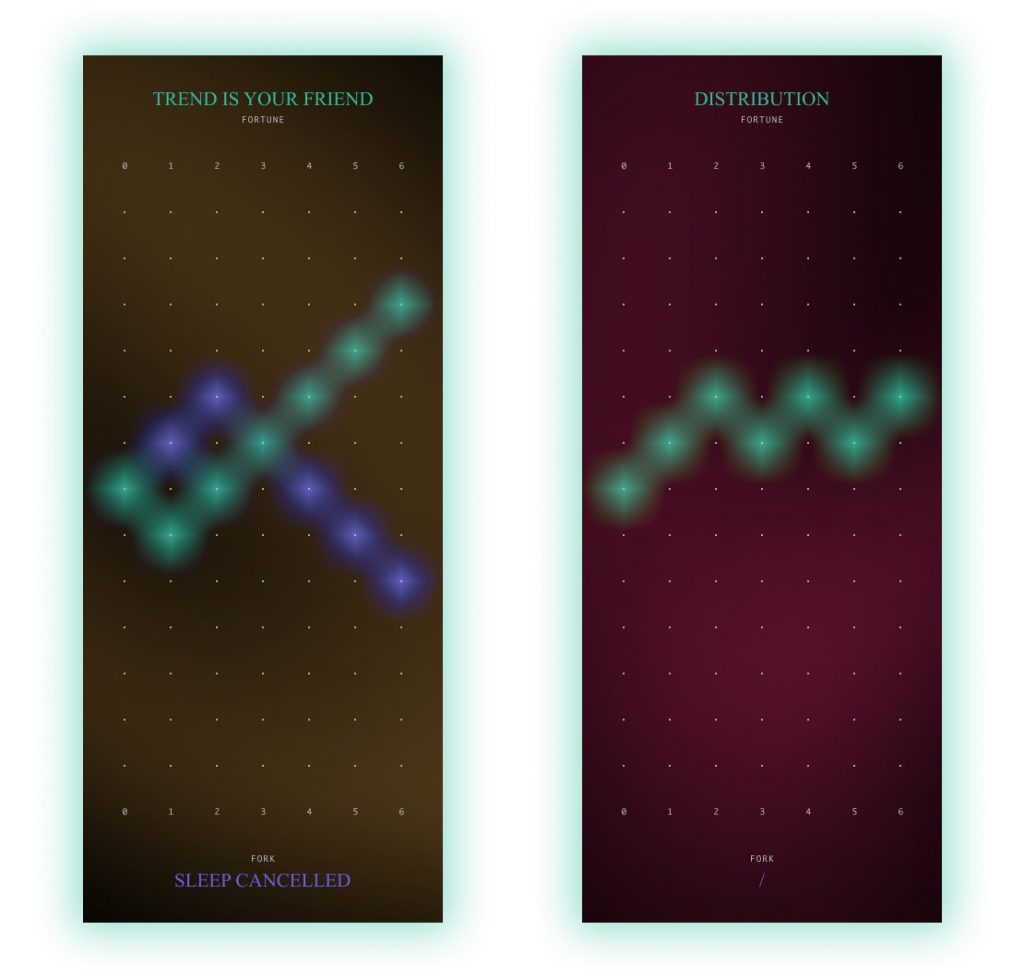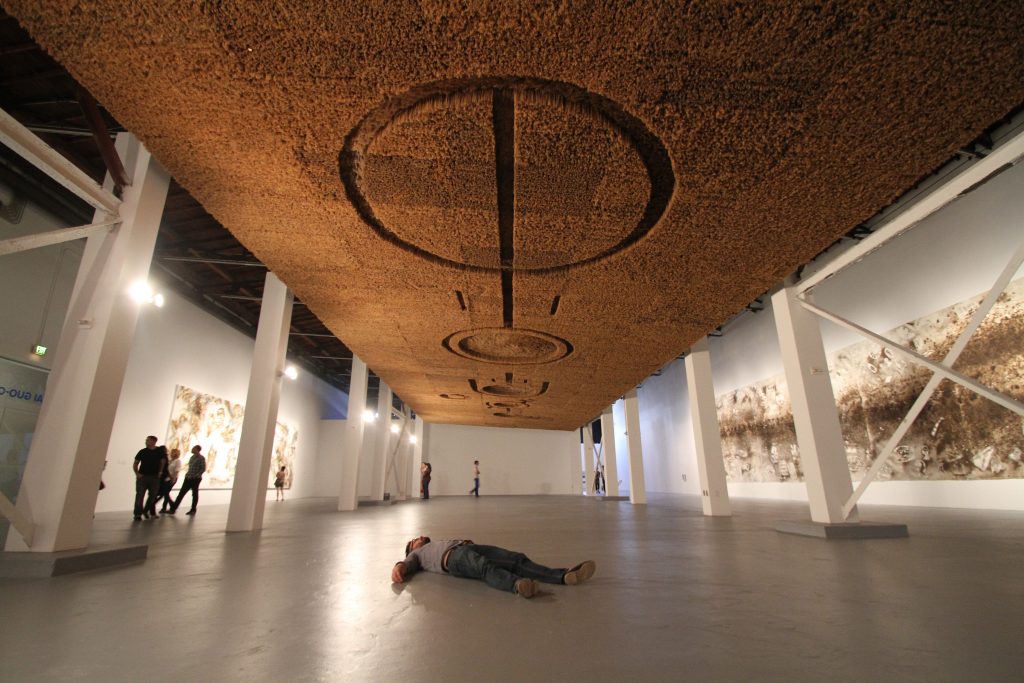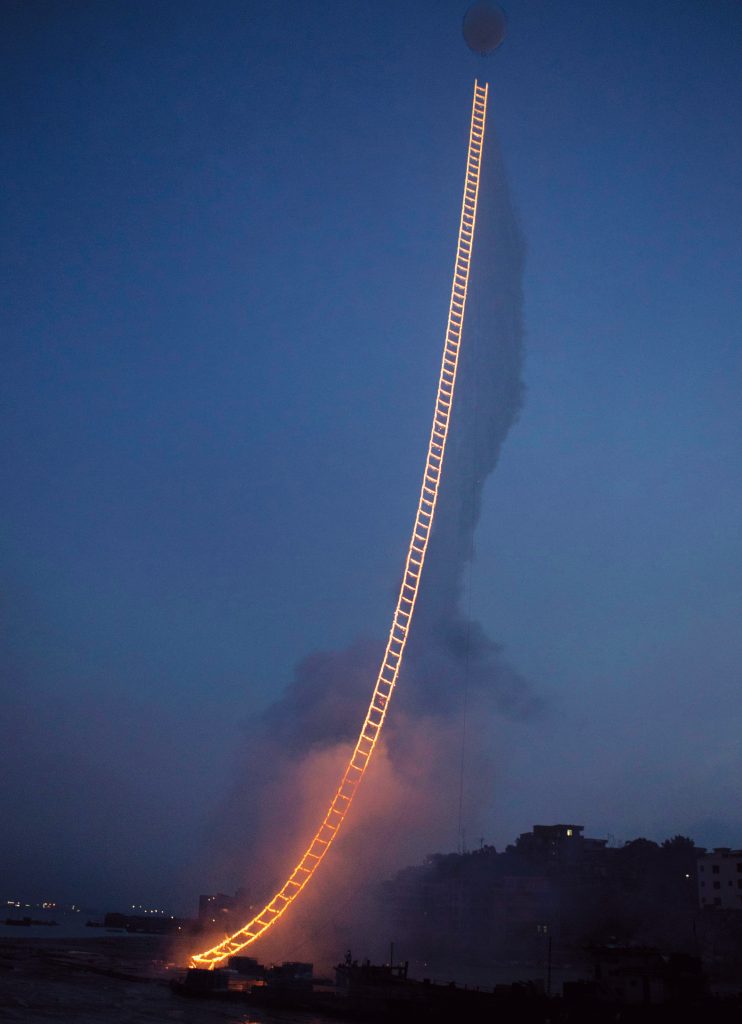“The art world today”, in Cai Guo-Qiang’s estimation, “seems rather conservative”.
Between intercultural conflict on the world stage and the advancement of technology on the creative front, the fields of art and culture, according to the artist, have not adequately reflected the chaos of the contemporary condition. . And especially not “at a time when the world is seriously questioning the authenticity of time, is actively launching into virtual space and infinitely expanding our vision of cosmos.”
For Cai, dealing with these issues requires reaching out to powers and realms beyond our reach – what he calls “the invisible world”.
“The more confusion we are faced with, the more guidance we need to take from the unseen world,” he told Artnet News. “Such power transcends individuals, localities and different cultures. At this time, it is especially important to continue the dialogue with the invisible world with a humble and curious mindset.
In May 15Cai will unveil one of these bridges to the unknown with his fifth NFT project, eetOr Exchange with aliens, produced in partnership with the Web3 Kanon collective. The artist describes her as “an oracle who lives on the blockchain”, the chat platform welcomes all sorts of questions from users much like a real-life fortune teller, and spits out answers in two distinct forms of tokens.

A fortune EET. Photo courtesy of Kanon.
One of them, called Gua, is a diagram randomly generated by eet based on physical inputs by users who are prompted to press a button on a screen while waiting for responses from the oracle. The other is dubbed EET Fortune, which serves as a “reading” containing a title and six verses. There are 64 basic formats of EET Fortunes, which can be crafted in 4,096 combinations, with random generation ensuring that no two reads are identical.
According to Cai, a Fortune EET is primarily intended to provide “a symbolic signal or direction.” But if that turns out to be particularly opaque, an AI assistant that’s been trained on EET Fortunes’ textual content is on hand to help users interpret its meaning.
Gua and EET Fortunes will also be created and encoded as animated GIFs, making eet the first NFT project to generate and chain image format. The price of the mint is 0.065ETH (around $119), although collectors who already own the artist’s NFTs will have access to free mints.

A fortune EET. Photo courtesy of Kanon.
The whole process involved in eet is inspired by and reflects the divinatory culture with which Cai grew up in his native Quanzhou, in southeastern China. He referred to the Chinese practice of divination kau chim, in which a seeker in a temple shakes a tube of bamboo sticks, each inscribed with a number, until one falls at random. The number on this stick will then be associated with a written fortune, which can be further clarified by a monk or priest.
eetas Cai said, “restores the behavioral and psychological process of kau chim in temples, except this time it’s all about blockchain and the virtual world.
This is not Cai’s first attempt to reach the invisible world. As impenetrable as it is, the unknown is omnipresent in his practice – since his series “Projects for Extraterrestrials” (1989–), comprising some thirty works, including his famous gunpowder paints, which illustrate his fixation with the cosmos; For sky scale (2015), his long-gestating sculpture to “connect the Earth to the universe”.

Cai Guo Qiang, Crop circles (2012). Photo: Wyatt Conlon, courtesy Museum of Contemporary Art, Los Angeles.
Lately, the new technological frontier represents just as much an invisible world for Cai. Let him make his VR pyrotechnic shows or more recently, train an AI program on his corpus, the artist has sought to bring his art into dialogue with technology. “The future,” he said, “is moving toward the integration of the virtual and the physical.”
“It’s just getting started, and I’m in no rush to jump to conclusions or make value judgments because everyone is exploring,” he said of new technologies. “But, at least, as the old Chinese saying goes, ‘lose at sunrise but win at sunset.’ Online experience and exploration will bring changes to my art in the physical world.

Cai Guo Qiang, sky scale (2015). Photo: Wen-You Cai, courtesy of Cai Studio.
NFTs and blockchain have been particularly fascinating to Cai. As the Kanon team said in a statement: “As we develop eetthe questions Cai asked us and the direction he gave us made us realize that he understood the potential depth of the medium much better than we did.
Since 2021, Cai has embarked on a steady series of blockchain projects, starting with fleeting eternitycommissioned by the Rockbund Art Museum in Shanghai, which grew in ambition, increasingly relying on the unique qualities and usefulness of NFTs.
Take Your daytime fireworks (2022), created in collaboration with the NFT TRLab platform. The project offered 7,000 token bundles of fireworks that collectors could “trigger” on a day and time of their choosing to reveal one of 90 works of art, which varied depending on actual environmental conditions. . In doing so, collectors were able to experience Cai’s process, from the planning involved to the anxiety and anticipation he feels before setting off his own fireworks. It made what the artist called a “live experience.”
This interactive and participatory aspect also allows eet, to the creative process that gave birth to it. The project, Cai recalled, was hammered out in Zoom meetings between his studio and the Kanon team, working across time zones and geographic divides. It introduced the artist to a whole new way of working, he said, “making projects through online communication with a group of friends I’ve never met.”
“What is interesting is that we create an interactive work that connects the virtual and physical worlds while our communication channel and our creative methods, which challenge the physical borders and the geographical distance between us, do in themselves part of the work,” he continued. “It is about a new artistic methodology brought by new social forms.”
But even as Cai has embraced the changes technology has brought to art, he continues to weigh these expanded possibilities. Will NFTs ever become an art form? Is his faith in new technologies “too ambitious” or “too tiny”?
When asked how he sees his works on the blockchain expanding his practice, he wondered if such digital advances, “including the so-called ‘metaverse,’ could ever “solve the problem of art ? Same thing with the problem of creativity.
But, as if stepping back, he added, “Creativity doesn’t replace oil painting with NFTs.”
Follow Artnet News on Facebook:
Want to stay one step ahead of the art world? Subscribe to our newsletter to receive breaking news, revealing interviews and incisive reviews that move the conversation forward.
